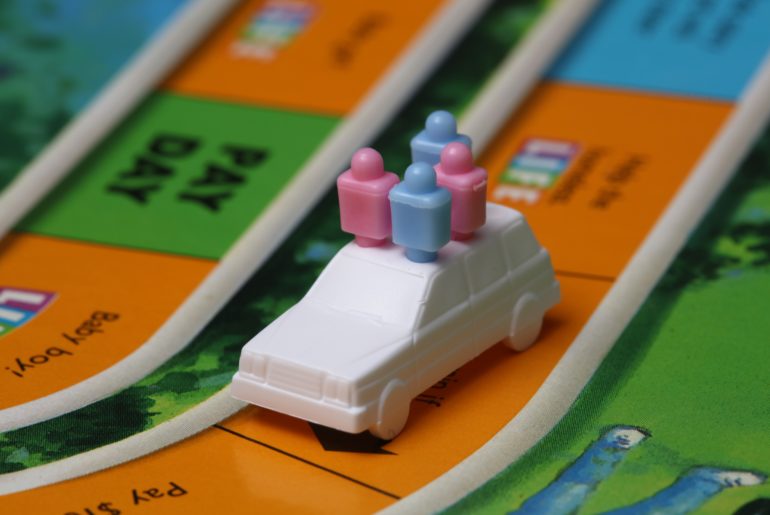There’s a lot to love about having a family game night, and the benefits can be even greater if you make it a regular tradition.
Hasbro has brought family game night back into the news lately with their new Ms. Monopoly game, which USA Today reports can offer families an opportunity to talk about issues like female empowerment and the pay gap (though, admittedly some aspects of it are problematic). But even simpler than that, according to child development experts at PBS, playing games helps kids with fine motor skills and problem solving, and promotes family bonding.
So, what do you need for a successful game night? The first thing most experts recommend is a “no devices” rule. A recent study demonstrated a link between even small amounts of “technoference”—when technology interrupts or interferes with relationships—and child behavior problems. Plus, it’s tough to bond as a family when people keep stopping to check a text.
Beyond that, you just need to find a game that everyone in the family can enjoy. Below we’ve rounded up some games you might not have played yet—a great excuse to try something new, or spice up an existing tradition at your house.
The items below use affiliate links—our nonprofit, ParentsTogether, may earn a percentage of purchases made through these links, at no additional cost to you. Thank you for your support.
Preschool – Ages 3-5
The kid-friendly version of the adult game, Sequence for Kids prompts logical thinking as each player pulls an animal card from their hand, then places a chip on the matching animal on the board. Each card is only pictured twice on the game board, so players have to get savvy to get four chips in a row, create a sequence, and win.
Great for kids 3 and up and 2 to 4 players.
Encourage memory recall while unleashing your child’s imagination with Richard Scarry’s Busy, Busy Airport Game. Players roll the dice down the control tower, load up the right number of passengers on their plane, then “take off” to the beach, mountains, or forest to pick up souvenirs. The player who collects the most souvenirs wins.
Great for ages 3+ and 2-4 players.
Hoot Owl Hoot! requires teamwork and helps boost self-esteem. The goal is to work together to move all the owls around the board and back to their nest before sunrise. You start by playing a color card then “flying” to the space of the same color. If you draw a sun card, you can swoop an owl all the way to daylight to wait for the others. Players can move any owl on their turn and discuss how best to get the owls home to win.
Ideal for ages 4 and up and 2 to 4 players.
Hi Ho! Cherry-O is a fun counting game that begins with a spinner that tells players how many fruits to pick from the “trees.” Kids love racing to fill their baskets—the first to fill theirs up wins.
Perfect for two to four players, ages 3+
Ages 6-12
Splash has players pass cards until someone gets four of a kind. Then it’s a race to grab a rubber dolphin from the table to gain a letter on the scorecard—but there are never as many dolphins as there are players.
Bonus: The cards teach interesting facts about ocean life, so it’s educational, too.
Great for ages 6-9 and 3-6 players.
What colors do you think of when you hear words like quiet or love? When it’s your turn to be the colorologist in Colorology, you secretly choose a shade to describe a word. Players move around the board when they guess the color you chose for the word card.
Great for ages 8-10 and 3-4 players.
To win Spontuneous you’ve got to be the first to belt out a song that includes the trigger word announced by the Tunesmith before time runs out.
Great for ages 8-10 and 4-10 players.
Each player receives a set of stacking pieces inside—what else?—a top hat. Then someone flips a challenge card and it’s a race to stack the pieces as shown on the card. The first to finish shouts, “Top That!” and scores a point. Once all the cards have been used the player with the most points wins.
Fun for ages 6 and up.
Twixt is a smart strategy game that promotes STEM skills.
A great choice for one-on-one time, the goal of this two-player game is to build a chain of linked pegs across a board, connecting your rows as you go while blocking the opponent from building their own. Great for ages 9-11.
















